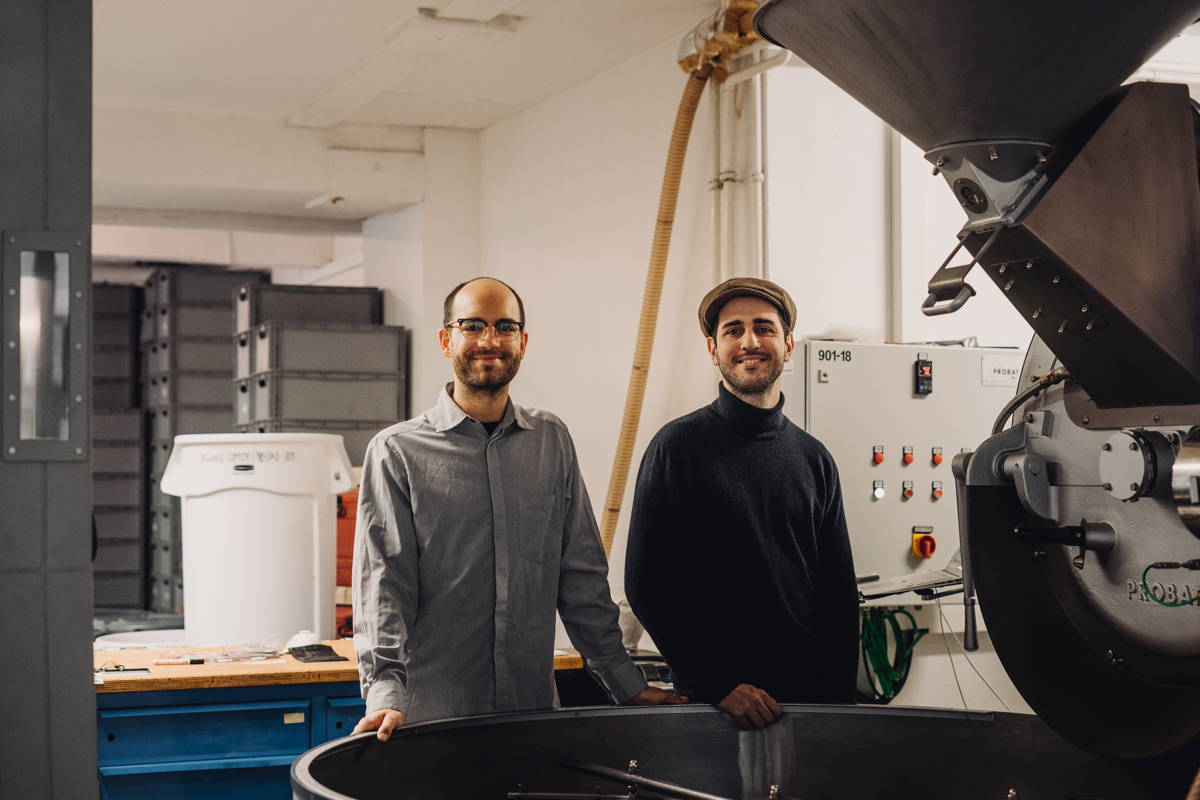
Roasting coffee and how it works
Roasting coffee is a traditional craft and fundamental for the taste of your coffee. Roastmasters create a unique roasting profile for each coffee, highlighting its individual character. At Coffee Circle, we roast all our coffees to perfection using the gentle drum roasting method.
What happens during roasting?
A coffee bean consists of approximately 300,000 to 400,000 cells, making it one of the most flavourful foods. Compared to wine, coffee contains more than twice as many natural flavour compounds, which are significantly influenced by climate conditions and growing regions, among other factors.
Roasting coffee can further influence its taste because under the application of heat, very complex chemical reactions occur in coffee. This process leads to the rearrangement of sugar substances and amino acids, resulting in an estimated 1,000 new flavours or chemical compounds being formed in each individual cell during roasting.
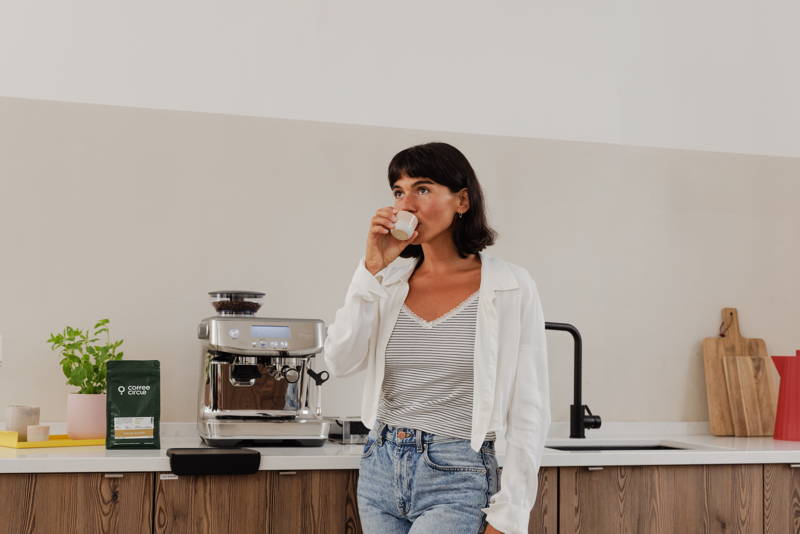
This is how we roast your coffee
At our coffee roastery in Berlin-Wedding, we impart our coffees with their unique character using a traditional drum roaster, the Probaten P60. Batches of 40 to 60 kg are roasted for durations ranging from 12 to 19 minutes, depending on the desired outcome. The end temperatures vary from 200°C for light filter coffees to 220°C for our darkest espresso, Grano Gayo.
After roasting, the coffee is rapidly cooled using cold air, without the use of water.
We opt for a longer roasting time at mild heat to bring out the flavor nuances of our coffees fully. In doing so, we deliberately preserve delicate fruit acids that shape the character of our coffee. Our espressos undergo a slightly longer roasting compared to filter coffees, effectively reducing unwanted acidity and making room for the robust espresso flavor. Overall, the drum roasting process is a demanding one that underscores our commitment to quality.
The roasting process is crucial for coffee quality. Learn more here about the degree of roast.
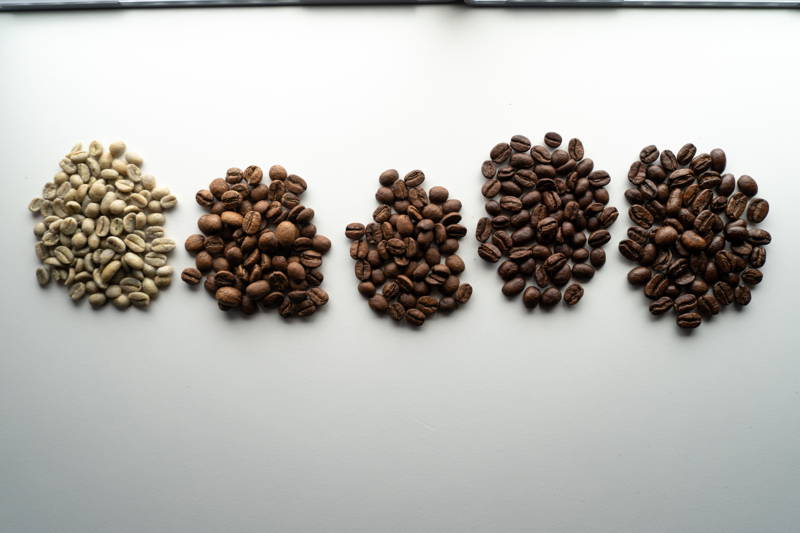
How does drum roasting work?
The initially pale green and hay-scented raw coffee is placed in the preheated roaster. The application of heat removes the remaining moisture from the beans, gradually turning their color to yellow. After around 7 to 10 minutes, the color transitions to a shade of brown, and a spicy aroma reminiscent of popcorn or freshly baked bread emerges. Due to the gases newly formed within the beans (carbon dioxide and carbon monoxide), the beans significantly increase in volume.
Around 12 to 15 minutes in, the pressure within the beans becomes so great that the cell walls of the coffee bean audibly crack. This moment is known as the „First Crack.“ From this point on, the entire spectrum of flavour diversity unfolds. Fruit acids are broken down, sugars caramelize, and the cell structure weakens. During this time, the roastmaster must closely monitor the process because there are only 2 to 4 minutes remaining before the beans would char. Within this timeframe, the color of the roasted coffee changes from light brown to medium brown, dark brown, and finally to blackish-brown. What makes drum roasting unique is that the roasting drum is made of cast iron, which imparts a distinct flavour note and a fuller body to the coffee.
Once the roasting process is complete, the coffee falls from the roasting drum into the cooling sieve. Here, hot air and a stirring mechanism are used to cool the coffee down. Afterward, the beans pass through a destoner, where any small stones that may be present in the raw coffee are removed. The roasted coffee is then packaged. It needs a few more days to degas. Only after a resting period of approximately five to ten days can it fully develop its flavour.
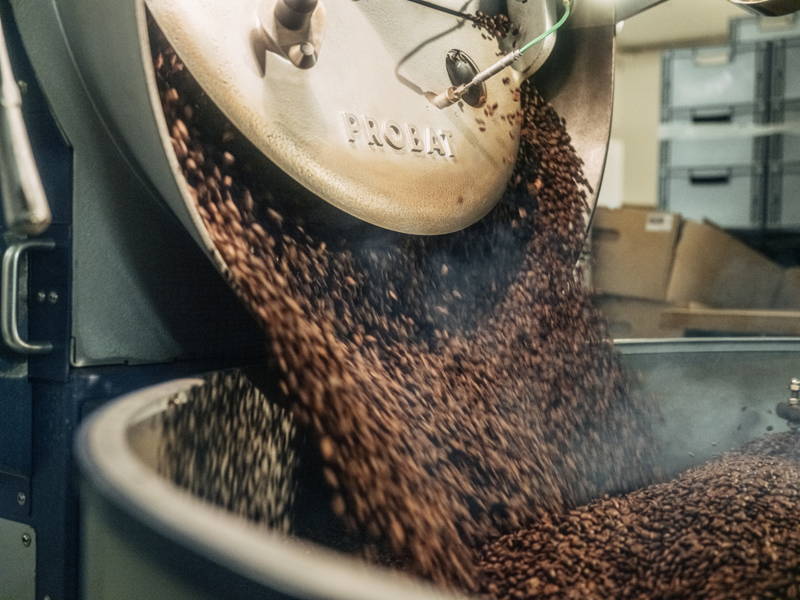
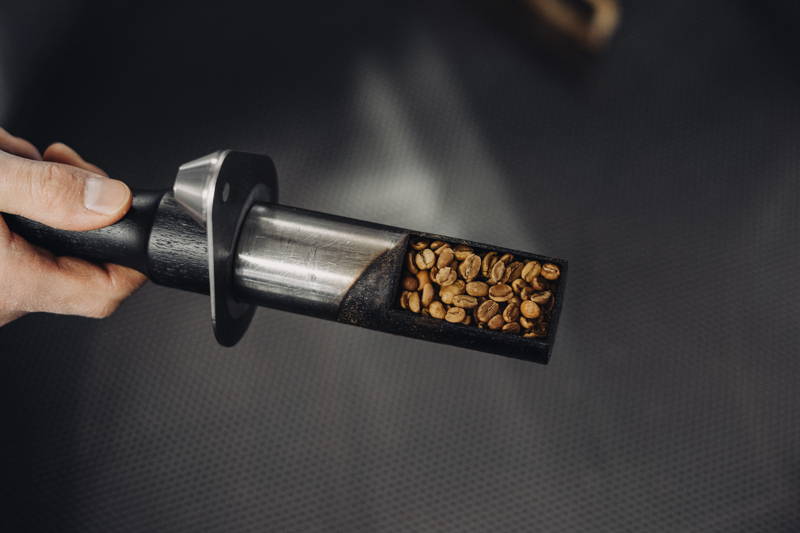
Acrylamide Levels in Coffee
The most significant chemical process during roasting is the Maillard reaction or non-enzymatic browning. In this process, amino acids and reducing sugars are transformed into melanoidins, which are nitrogen-containing organic compounds. This process is responsible for the browning of coffee beans and the creation of up to 800 flavors that your coffee can contain. By the way, the Maillard reaction occurs not only during the roasting of your coffee but also, for example, during baking bread or grilling steak. During the Maillard reaction, the formation of acrylamides can occur at temperatures of around 200°C. Interestingly, coffee contains less acrylamide when it has been roasted using the gentle drum roasting method.
In 2015, ZDF tested the acrylamide levels in various coffee varieties, including the Limu coffee, which outperformed the test by a large margin!
Our Head of Coffee: Hannes
Hannes has been with Coffee Circle since 2012. He has always been intrigued by the diverse influences on coffee, such as the material of the drum roaster and the degree of heat. According to Hannes, the search for a great roast involves a lot of experimentation, making this profession truly unique. His personal favourite is our Yirgacheffe – a classic coffee with its floral notes that „opened his eyes.“
Thanks to our in-house roastery, Coffee Circle can produce fresher coffee with significantly improved and consistent coffee quality. This also allows for effective quality control and the opportunity for more experimentation and a changing coffee portfolio.

Intuition, Experience, and Passion in Coffee Roasting
The art of coffee roasting lies in controlling the heat input of the roasting machine to achieve optimal flavour development. Once we have developed an ideal roast profile for each coffee, the technology of the roasting machine helps us reproduce this profile consistently. During the roasting process, even a few seconds or minor temperature variations can lead to differences in taste. As the roasting time increases, acids are broken down, and roast aromas intensify. The longer the coffee is roasted, the stronger and more bitter it becomes, with the coffee’s inherent flavour receding into the background. Depending on the purpose for which the beans are roasted, the roast level and final temperature are determined by our roastmasters.
When roasting espresso beans, a strong flavour with minimal acidity is typically produced, which is why espressos are roasted for a longer duration. On the other hand, for filter coffee, a slight acidity contributes to the liveliness of the flavour, so it is roasted for a shorter time.
For most of our Explorer Edition coffees, known for their light roasts, the roastmaster typically ends the roasting process shortly after the First Crack. This type of roasting is prevalent in Scandinavia, for example. If you have a cup of filter coffee there, it’s more likely to remind you of tea rather than traditional coffee. However, if you visit a café in Italy, you’ll find strong roast aromas and a bitter taste in your cup because Italians prefer a dark roast, similar to our Grano Gayo Espresso.
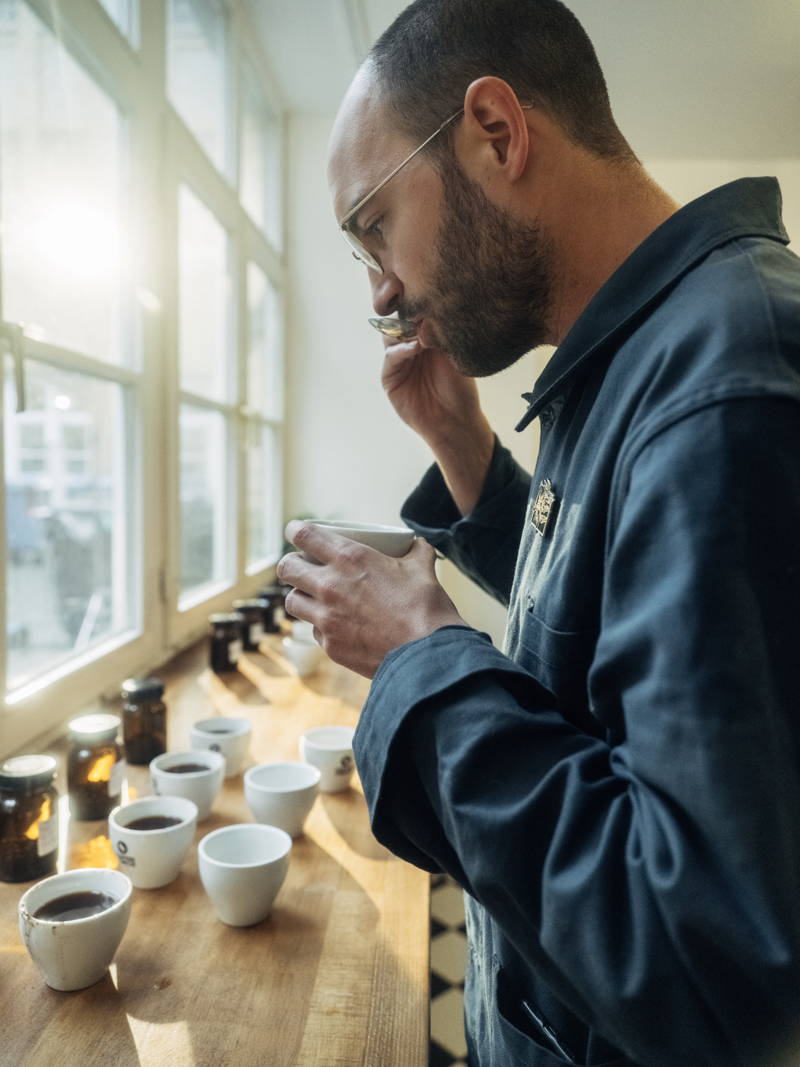
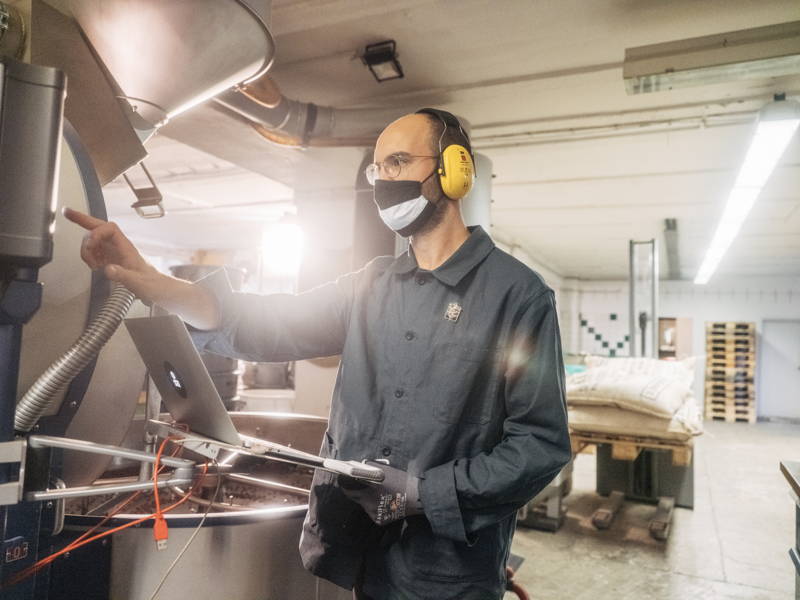

Find the coffee that suits you best
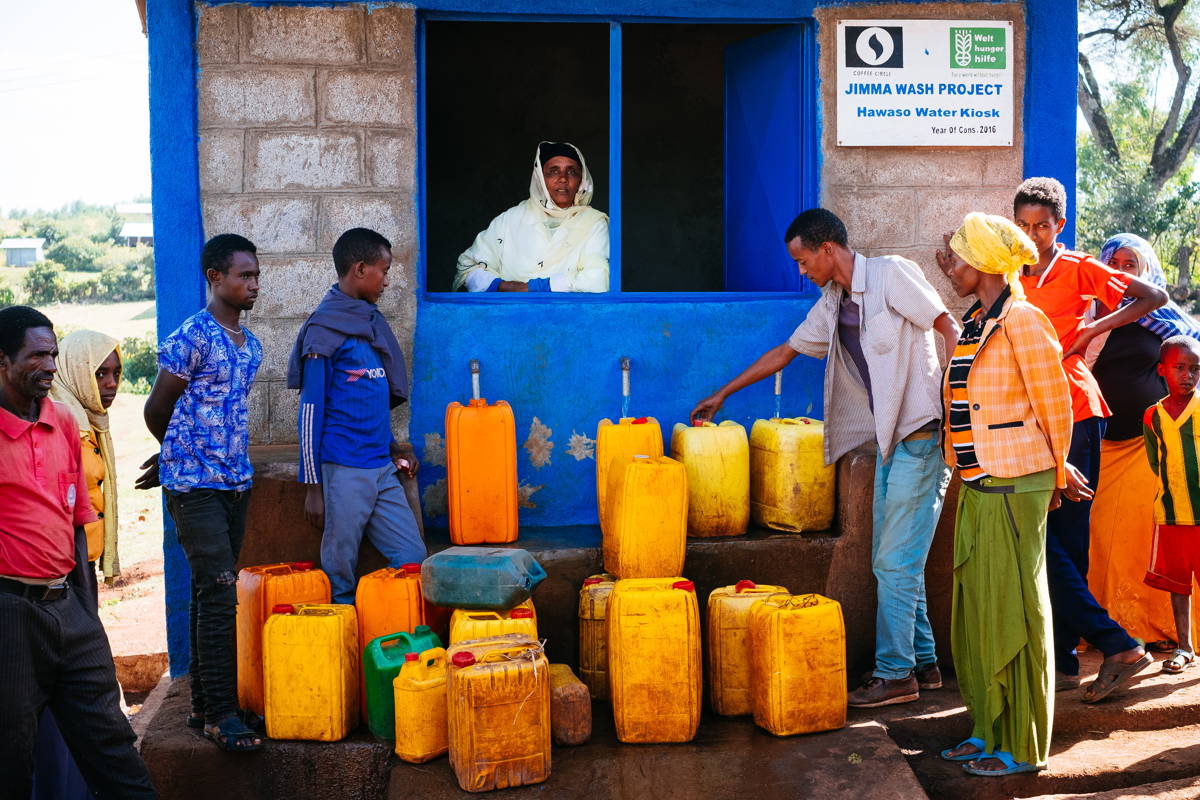
Doing good is as simple as that
Together with you, we are improving the lives of coffee farmers and their families, as we invest €1 per kilogram of coffee in our projects in the coffee-producing countries.




